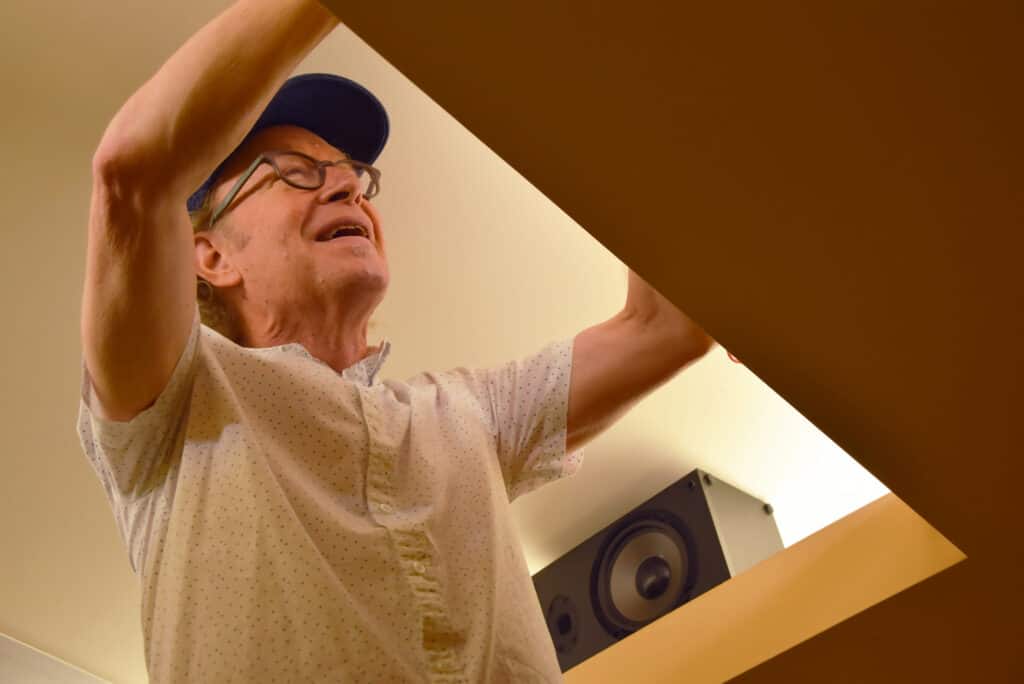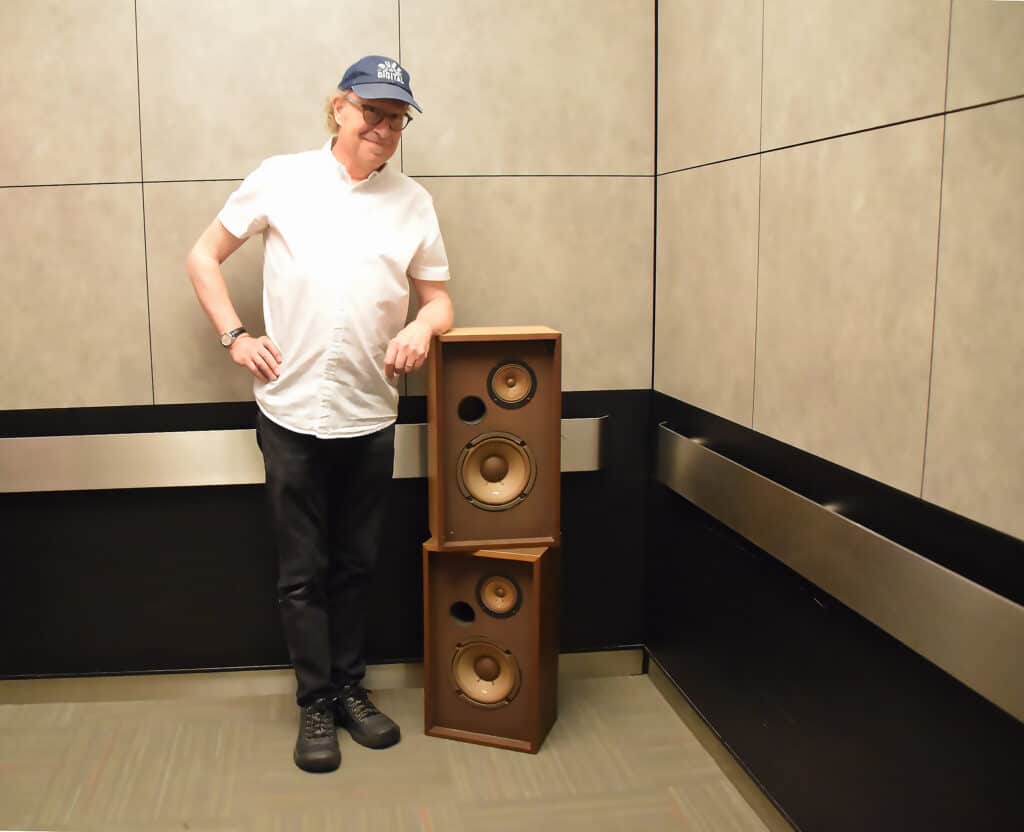While many artists rely on their eyes and hands to guide them in the creation of an artwork, Lehigh Valley–based sculptor Scott Sherk depends on his ears. Sherk uses sound as a medium to bring into focus the world around him, and now visitors to the Allentown Art Museum can experience that world too, and maybe even be inspired to listen more closely to their own surroundings.
Art in Unexpected Places: Scott Sherk opened at the Museum recently as part of a series of works that are meant to engage visitors when and where they least expect it. The first work in the series was the mural Transcultural by Rigo Peralta, which covered the upper walls and ceiling of the Museum’s vestibule from January 2016 to June 2019. Since October 2019, an installation of wallpaper designed by Ai Weiwei titled Golden Age has filled that space. Also unexpected is the realistic sculpture Whittler VII by J. Seward Johnson Jr. that is outside on a sidewalk leading to the Museum’s parking lot.
Now, two Scott Sherk audio works are activating unconventional spaces around the Museum.
“When [Museum president and CEO] Max Weintraub invited me to think about the concept of art in unexpected places in the Museum, I was immediately attracted to the elevator as a challenging site,” says Sherk. “Later, walking around the Museum, I decided that the restrooms had to be the least likely place to encounter art. So it was the elevator and the restrooms.”
Fountains of Rome (2019) and Elevator Piece (Spatial Sound 13) (2022) are the results of Sherk’s “listening.”

Sherk installs speakers to play his Fountains of Rome.
“While at the American Academy in Rome before the pandemic, I was struck by the use of water throughout the city. I began making a sound survey of the city by trying to make a recording of every fountain that I encountered. Fountains of Rome is a soundscape made from these field recordings. A soundscape is a composition created from found sounds. I think of this work as a construction of spaces.”
For Elevator Piece, Sherk thought about how elevators move vertically through space. “Part of my listening project has been to discover sounds not immediately accessible. I recorded the underwater sounds of Jordan Creek, near my home, and Elevator Piece is a composition created from those sounds—bubbles, fish, water currents, vibrations from traffic—creating a new space that descends and surfaces with the elevator.”
Elevator Piece consists of two speakers stacked vertically in the corner of the elevator. “I want people to encounter them as another passenger in the elevator,” says Sherk. “It’s always a strange situation to be in an elevator with a stranger. Do you talk, not talk? Elevator Piece does all the talking.”

The artist with the speakers playing Elevator Piece.
Both audio works continue through June 18, 2023, at the Museum, where admission is free due to the renovation of some galleries in preparation for the opening of the New American Galleries in August.
Following is a Q&A with Scott Sherk:
When and how did your interest in sound as an artistic medium develop?
Some years ago, while experimenting with an early digital music player, I rediscovered sound and its spatial qualities. Deeply influenced by both the extraordinary space around an Alberto Giacometti sculpture and the ordered yet intangible space of a Japanese dry rock garden, I had grown increasingly interested in the subjective, embodied experiences of space. With my early recording device I suddenly realized that sound—the sound of our immediate environment—provides another way of experiencing and apprehending space. We “read” the resonances, reverberations, and frequencies of our aural environment as qualities of space. For instance, walking into a gymnasium with our eyes closed we would immediately “know” that we were in a large, high-ceilinged space with hard surfaces. Similarly, entering into a clothing closet with quiet dampened sound tells us as much about the space as our vision. The challenge, however, is to become aware of sound. As pioneering sound artist Max Neuhaus simply put it, “LISTEN.”
Do you consider both of these works “sound art” or some other term?
I like to think of myself as a sculptor who works with sound.
What should visitors listen for in the works? Anything specific, or an overall atmosphere?
In Fountains of Rome, listen for the different spaces that the fountains inhabit—from busy piazzas and street corners to interior courtyards and quiet parks. You can also hear the canon fired from Janicolum Hill at noon. The spaces slowly shift from intimate to public. The resonant sounds of the water give you many subtle clues about the size, shape, and use of the spaces you hear.
Elevator Piece creates a new and unfamiliar soundscape. One should listen carefully and let the sounds create a space within the elevator.
Are there feelings connected to these works, for you personally?
I find sounds very evocative.
What effect do you hope these works have on the listener?
I hope that these pieces will encourage listeners to be more sensitive and mindful of their own soundscapes. The world is never silent.
Listen to a sample of Fountains of Rome HERE.
Scott Sherk (American, b. 1952), Fountains of Rome, 2019, audio, 62 minutes, 24 seconds. Courtesy of Scott Sherk.
Listen to a sample of Elevator Piece HERE.
Scott Sherk (American, b. 1952), Elevator Piece (Spatial Sound 13), 2022, audio, 7 minutes, 13 seconds. Courtesy of Scott Sherk.
Scott Sherk and painter and book artist Pat Badt are collaborators in The Third Barn, an ongoing curatorial project where the husband-and-wife partners workshop and produce art, often in tandem.

